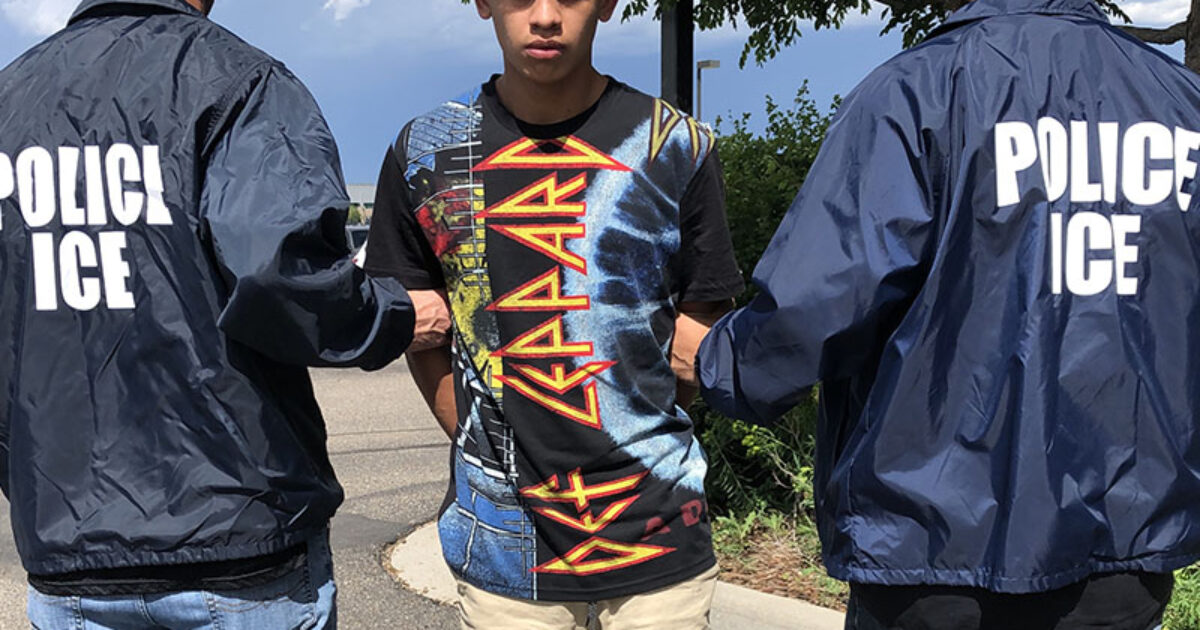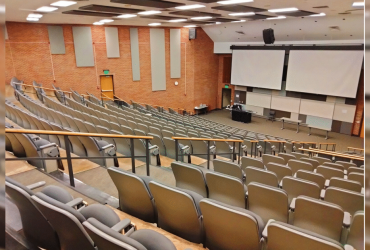Photo courtesy of U.S. Immigration and Customs Enforcement
Democrat lawmakers and the mainstream media often claim that less than half of the illegal immigrants currently in detention have criminal records, with some reports stating that 74% have no prior convictions. However, a criminal conviction is not required for deportation, as 100% of these individuals have already broken the law by entering or remaining in the country illegally.
Moreover, focusing solely on convictions ignores those with pending criminal charges, known affiliations with gangs or cartels, or those who were trafficked into the country. When these groups are included, the percentage of illegal immigrants with ties to criminal activity rises to nearly 80%.
Even if Democrats insist on using criminal record as the standard for deportation, a recent ICE operation, Operation Patriot, revealed that approximately 54% of the 1,461 individuals arrested had either criminal convictions or pending charges. This rate far exceeds that of the general U.S. adult population, where roughly one-third, about 70 to 100 million people, have some form of criminal record, including arrests without convictions.
Many illegal immigrants without pending charges are still arrested by ICE because the agency specifically targets individuals with known or suspected criminal backgrounds. For example, during the first 50 days of President Trump’s administration, 75% of ICE arrests involved individuals with either criminal convictions or pending charges. In lawful, warrant-based raids on homes and workplaces, everyone present is required to show identification and proof of citizenship.
It is during these checks that many are found to be in the country illegally and often identified as having gang affiliations. According to ICE data, well over half of all illegal immigrants have some form of connection to gangs, cartels, or human traffickers.
According to the United Nations Office on Drugs and Crime (UNODC), 97% of those who entered the U.S. illegally did so via the U.S.-Mexico border, almost entirely through smuggling networks. U.S. Border Patrol officials have stated that “nobody crosses without paying the cartels,” confirming that illegal immigration is now fully monopolized by criminal organizations.
These smuggling operations are run by “coyotes” who operate directly under cartel control. As a result, nearly all illegal immigrants entering through the southern border have some level of connection to a drug cartel.
Migrants pay steep fees to cross the border, averaging $6,937 for Mexican nationals and between $7,000 and $10,000 for Central Americans. Using a conservative estimate of $6,500 per person, cartels likely earned over $13 billion from human smuggling in FY2023 alone, based on the 2.8 million illegal crossings reported that year. But smuggling is only the beginning of the exploitation many migrants face.
Research from San Diego State University found that 6% of undocumented Mexican immigrants were trafficked by smugglers during entry, while 28% were trafficked by employers after arrival, meaning more than one-third experienced trafficking either en route or once in the U.S.
The study also found trafficking was widespread in low-wage industries in San Diego County: Though jobs in cleaning, construction, landscaping, and agriculture may appear legitimate, many serve as fronts for gangs or cartel-linked laundering operations. In San Diego County, 36% of undocumented Mexican workers in cleaning services, 35% in construction, 27% in landscaping, and 16% in agriculture reported being trafficked.
Even those not directly involved in criminal activity often live in gang-controlled neighborhoods where they are forced to pay “protection rent” or face violence. Others must work off smuggling debts through forced labor or drug trafficking.
Some migrants are coerced into criminal acts such as drug smuggling, theft, or gang enforcement due to debt bondage or threats from traffickers. Others become entangled in criminal networks simply by residing in gang-dominated areas or accepting under-the-table jobs in illicit labor markets, where gangs and cartels exploit legal loopholes, underpay workers, and avoid regulation.
Whether through coercion, economic necessity, or geographic proximity, many undocumented migrants, knowingly or not, end up supporting criminal enterprises and extending the reach of gangs and cartels into American communities.
The term “voluntary trafficking” accurately describes the situation of many illegal immigrants. When combined with those who are trafficked involuntarily, nearly 100% of illegal border crossers fall into one of these two categories. And by definition, 100% of them are in the country illegally. Those who are employed are also committing a secondary offense by working without a permit, and most are not paying taxes.
Almost every illegal immigrant entering the country contributes to cartel revenue, either by paying smugglers, working directly for cartels or gangs once inside the U.S., or handing over extortion money to criminal groups in gang-controlled neighborhoods. There is no benefit to the United States in maintaining an underground economy tied to transnational criminal organizations. Claims that this form of “diversity” strengthens America are baseless.
If Democrats are serious about protecting migrants from exploitation and trafficking, they should support securing the border, cutting off all financial aid to illegal immigrants, and eliminating all pathways to citizenship or green cards for those who entered illegally. These steps would remove the incentives that fuel illegal immigration and significantly reduce human trafficking and exploitation.
The post Most Illegals Have Some Connection to Gangs, Cartels, or Human Traffickers appeared first on The Gateway Pundit.











